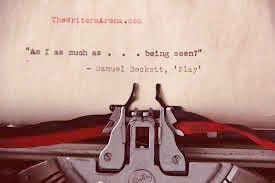Show and Tell
 It’s not enough in the 21st Century to simply write a story. Modern humans have been exposed to the moving image for too long to go back. Starting with black and white films that became “talkies”, then color, then television, video games, and so on up the line. It leaves authors in a predicament.
It’s not enough in the 21st Century to simply write a story. Modern humans have been exposed to the moving image for too long to go back. Starting with black and white films that became “talkies”, then color, then television, video games, and so on up the line. It leaves authors in a predicament.
Do we abandon the novel and begin writing screen plays? Has the computer graphic image ruined model making and made stunt men obsolete? I want to imagine that computers haven’t quite taken over yet, that our skills are not slaves to machines.
I believe in computers. I think they are excellent servants. I use one every day to ‘blog’ and write stories. It’s a fantastic device with which to edit without killing trees, with which to submit without stamps, and communicate without travel. I’d like to elaborate on the “edit” characteristic if I may.
In the late 1980’s I typed out a rather large manuscript, about 55,000 words. Of course, I didn’t have an exact word count. We just counted pages and used Courier 12 for everything, one inch margins. There were no such things and widows and orphans, wrap around text, auto correct, spell check, or even a way to justify the resulting page. And I resisted technology, finding the learning curve too steep, until I saw the power of a word processor.
Suddenly, I could go back and change something without having to re-write the entire damn novel! I could change a characters name 100 times if I wanted. I could add paragraphs, remove sentences, cut and paste entire chapters or just a single word. I didn’t have to re-write the entire book over and over, inserting a page, changing the page number, worrying if I put in one too many little words if I would need an entire sheet of paper for the word “it”.
And so comes the showing and telling. The technology of today encourages, or at least hopefully it does, better story telling. No longer is the author limited by frustrations of paper and correction fluid. We no longer have to stop and look up the spelling of a word, fumble with a thesaurus (sometimes I still do), or best of all, drop everything and go to the library to research a topic.
And therein lies the rub. We no longer have to do the work. The computer serves at our leisure. Hopefully this allows the author to put more into the showing of a story instead of the mechanics of getting it done. And so we should hold the novelist to a higher standard. The showing becomes critical to engage today’s reader, and with so many resources readily available, mistakes, oversights, neglecting facts and assuming the reader is not sophisticated are deadly to today’s novels.
Showing takes work. It’s when a character slams his fist on the table instead of the author typing “he was angry”. It’s when a character crumples to the ground in heartbreak, not typing “she was really sad”. The novelist today must write scenes as if they were playing on the cinema. And jumping around is not allowed. The author must clearly identify when you are moving to another character’s point of view.
I have a couple of rules I try to follow at all times (coming back to the technology). I avoid two words whenever possible. “There was.”
There was a creaking sound.
If I write that at all, I will go back and rip that flat, pale, pathetic sentence out and replace it with something more like “In the silence of the dark, dusty kitchen, she heard a door creak.” Or something like that which makes a person put themselves into the shoes of the character and hear the rusty hinges as a door opens with unimaginable consequences.
So the writer must, must show the reader what is happening and trust that the reader will know that the young widow is devastated because she couldn’t even stand up upon hearing of her husband’s death. Don’t tell me she is sad, show me what she’s done and I will be there with her, investing my emotions in the story, feeling her sadness. If you can’t do that, then you might want to consider another profession. Today’s reader demands it, today’s market is ruled by the reader, and given how easy it is to search, replace, and research, it is now the writer’s duty to compete with the sparkle and glitter of Hollywood. If a picture is worth a thousand words, it’s time to employ words with care and intent. For practice, try describing the image below. You’ll know the challenge of today’s authors.
